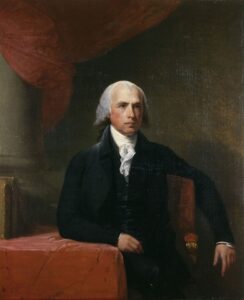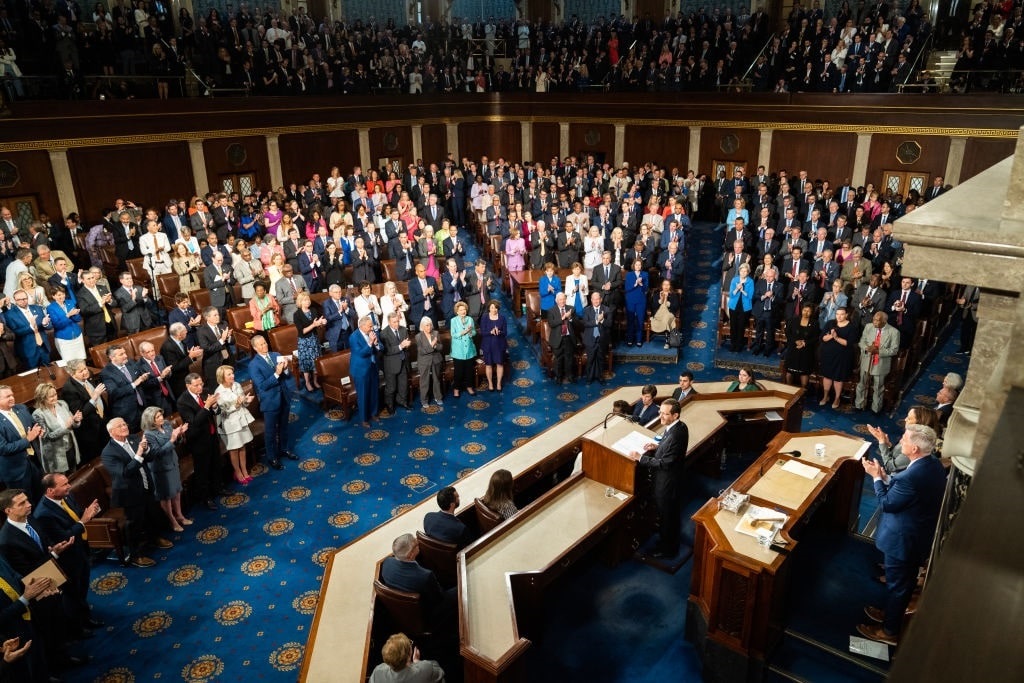Earlier this year, Congressman Sean Casten, a Democrat from Illinois, introduced the Equal Voices Act. The bill once again raises the question: Is it time to expand the House of Representatives? Historically called “The People’s House,” it was the only part of our federal government where the people have been able to directly vote for their representative since the Constitution was adopted. As the population of America has exploded during the 20th and 21st centuries, the number of representatives has remained fixed, diluting the power of the people to effectively participate in our government and contributing to the polarization and degradation of American politics today.
When the Constitution took effect, there were only 65 members of the House. The number of representatives was to be dependent on population. In 1790, there was one representative for every 34,000 people, and as the country grew so did the House. Between 1787 and 1910, membership increased from 65 to 435. Between 1910 and 2020, however, while the United States’ population nearly tripled, House membership increased by zero seats. In 1930, Congress passed the Reapportionment Act, which capped its membership at 435. Representation in the House was diluted from one representative for every 34,000 people to, at that point, one for every 280,000. As of 2020, that ratio was one for every 762,000 people. This was not what our founding fathers intended.
The Father of the Constitution
“As it is essential to liberty that government in general should have a common interest with the people, so it is particularly essential that the branch of it, under consideration should have an immediate dependence on, and an intimate sympathy with the people.” – Federalist No. 52
These were the words James Madison wrote when describing the House of Representatives. The Constitution states that the number of representatives should be apportioned among the several states, which means that membership is dependent on population. It also states that the number of representatives generally should not exceed one for every 30,000 people, but that each state should have at least one representative.

James Madison (Photo by: Photo12/Universal Images Group via Getty Images)
It became apparent in the early days of the Republic that more clarity was needed for regulating how House membership was calculated based on population. Madison wrote a constitutional amendment that would have required one representative for every 30,000 people, but that each time the House grew, that number would also grow so that after 100 representatives the ratio would be 1 to 40,000 and 200 representatives would bump up the ratio to 1 to 50,000. However, this amendment was one state short of being ratified at the time, so it never became law.
How the House has Regulated Itself
Madison passed away in 1836, and by the end of that decade, the Founding Fathers who led the American Revolution and early Republic were all gone. In 1830, there was one representative for every 50,000 people, with a total of 240 representatives. Congress, now governing itself under the leadership of politicians born after independence, decreased their number in 1840 to 223, with one member now having an average of over 70,000 constituents. This ratio would become steadily diluted until 1910.
Every ten years, after the completion of the decennial census, Congress would pass an apportionment act to determine how many members the House would have for the following decade. The last act was passed in 1911, which set the number at 435 members. There was no such act in 1920, and in 1929, Congress passed the Permanent Apportionment Act, which fixed the number at 435. Representatives would shift between states based on their populations every ten years. Each state’s congressional delegation changes every decade because of the shifts, even if that population had grown.
Unintended Consequences
Going from one representative for every 34,000 people to one for every 762,000 has created distance between the citizens and the person chosen to represent them. It makes it more difficult for representatives to provide services to the people they represent, as their offices are burdened by the weight of answering to three-quarters of a million people.
Because there are fewer representatives in proportion to the people with the passing of each decade, this has created a scarcity of available House seats. This increases the cost of running a successful election, which creates a barrier for those who don’t have access to enormous war chests. In 2020, $8.7 billion dollars was spent on congressional campaigns. That’s tens of millions of dollars spent on each of the 435 seats.
Gerrymandering has become a huge issue in modern politics, as well, with state political parties dividing their maps into weirdly shaped districts to prevent the opposition from winning any seats. The fixed number of House seats that should have grown in number with the population are instead game pieces used by career politicians to consolidate power at the expense of the people.
Solutions to the Problems
Defenders of the current 435 membership cap claim that any increases would create chaos because the body would be too large. This argument goes against Madison’s views and intentions as stated in Federalist No. 55, where he felt that a smaller house with fewer members would be a threat to liberty.
“The true question to be decided then is, whether the smallness of the number, as a temporary regulation, be dangerous to the public liberty? Whether sixty-five members, and a hundred or two hundred for a few more, be a safe depository for a limited and well-guarded power of legislating the United States.”

(Tom Williams/CQ-Roll Call, Inc via Getty Images)
Madison’s unratified amendment would certainly make the House more democratic, but expanding the House from 435 to more than 1,700 members would be a radical shock to the system. Perhaps it could work if gradually applied.
For now, a realistic, fair, and constitutional solution to bring the power back to the people would be to remove the 435-member cap and replace it with one representative in ratio to the smallest state’s population. This is an old proposal known as the Wyoming Rule. In 2020, Wyoming’s population was 580,000. In a country of 330 million people, this would increase the House’s size to 573 members and as the population continues to increase, so will the number of seats. While this solution isn’t perfect – it’s still far from one representative for every 34,000 people, or even one for every 210,000 people – it is a drastic improvement from the current situation. And in a time of bitter division over political issues, restoring the connection between representatives and the people they’re elected to represent could be the best step forward.
~ Daniel Kowalski is an American citizen who’s worried about his children growing up in a country on the decline because of poor management.




